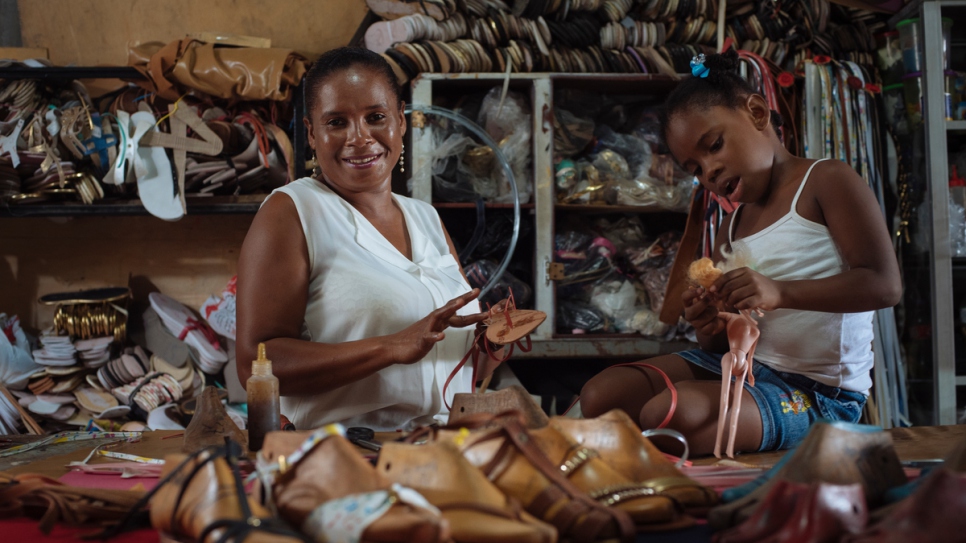Towards a global compact on refugees
In 2016’s historic New York Declaration for Refugees and Migrants, all 193 Member States of the United Nations agreed that protecting those who are forced to flee and supporting the countries that shelter them are shared international responsibilities that must be borne more equitably and predictably.
The Declaration gave UNHCR the task of building upon the Comprehensive Refugee Response Framework, contained in Annex I of the New York Declaration, to develop “a global compact on refugees”. UNHCR will develop the compact in consultation with governments and other stakeholders, and the High Commissioner will propose the text in his 2018 annual report to the General Assembly.
This compact is a unique opportunity to strengthen the international response to large movements of refugees (both protracted and new situations). It will have four key objectives:
- Easing pressures on countries that welcome and host refugees;
- Build self-reliance of refugees;
- Expand access to resettlement in third countries and other complementary pathways;
- Foster conditions that enable refugees voluntarily to return to their home countries.
The New York Declaration also set in motion a separate, ongoing process for the negotiation of the global compact for safe, regular and orderly migration.
What will the global compact on refugees include?
As outlined in UNHCR’s ‘roadmap’, the global compact on refugees will have two parts:
- The Comprehensive Refugee Response Framework, as already agreed to by Member States in the New York Declaration and supplemented by a preamble and concluding paragraphs.
- A programme of action that will draw upon good practices from around the world, and set out specific measures to be taken by UN Member States and others to operationalize the principles of the New York Declaration.
The programme of action will provide a blueprint to ensure refugees have better access to health, education and livelihood opportunities and are included in their host communities from the very beginning. It will also set out tangible ways host governments can be supported when faced with large movements of refugees, and responsibility sharing systems so they do not shoulder the burden alone. This could include, for example, standby and partnership arrangements to deploy technical expertise, the release of funding reserves, or activation of resettlement quotas.
How will the global compact on refugees be developed?
The global compact on refugees is being developed through three inter-related processes:
- The Comprehensive Refugee Response Framework will continue to be applied to specific countries or situations including by drawing lessons from existing or past refugee situations. Learn more about this work here.
- Thematic discussions on the key aspects of the Comprehensive Refugee Response Framework are taking place with involvement of UN Member States, NGOs, academics, experts, advocacy groups, and other stakeholders. These discussions will take place in dedicated sessions from July 2017, as well as in existing fora, such as UNHCR’s 2017 Annual Consultations with NGOs in June 2017. Key topics will include: past and current regional approaches to large movements of refugees; measures to be taken on the reception and admission of refugees; support for immediate and ongoing needs of refugees and host communities; and durable solutions for refugees. Learn more about the thematic discussions here.
- A stocktaking of progress made and lessons learned will take place in late 2017, including at the High Commissioner’s Dialogue on Protection Challenges in December.
UNHCR will then produce and circulate a draft of the proposed global compact on refugees. Formal consultations will take place between February and July 2018, informing the final text to be proposed by the High Commissioner in his 2018 annual report.
Further information on this process can be found in Towards a global compact on refugees: a roadmap
Additional resources
- Quick Guide on New York Declaration for Refugees and Migrants
- The New York Declaration for Refugees and Migrants: Answers to Frequently Asked Questions
- Bringing the New York Declaration to Life: Applying the Comprehensive Refugee Response Framework
- Text of the New York Declaration
- Towards a global compact on refugees: a roadmap
- Towards a global compact on refugees: key elements of the roadmap
- UNHCR welcomes ‘unprecedented force and resonance’ of New York Declaration, press release
- A Minor Miracle: A New Global Compact on Refugees, address by Volker Türk, Assistant High Commissioner for Protection

